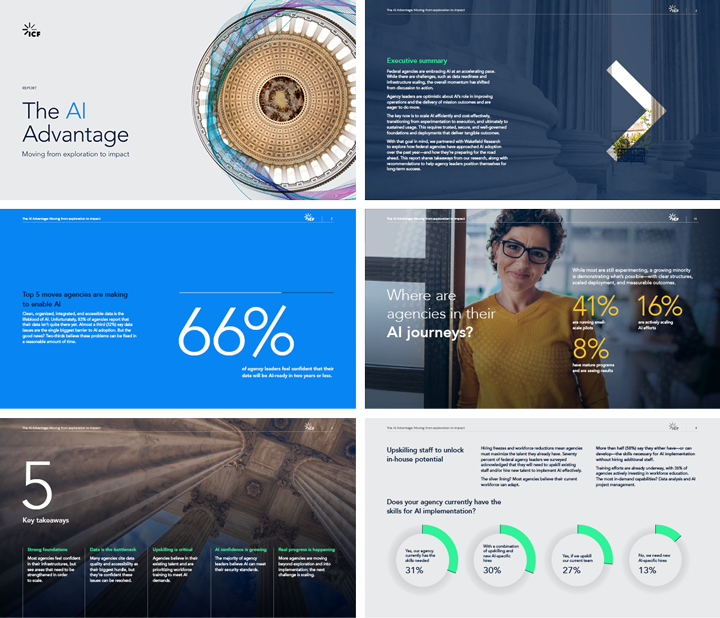
How the ‘Voice of the Client’ sparks innovation
This is the second in a three-part series about the value of human-centered design in government agency digital modernization.
The first post in this series explored ICF’s approach to human-centered design (HCD) and the importance of discovering and understanding the Voice of the Client (VoC). Our teams incorporate the VoC in the design and development as part of our SAFe Agile methodology, which allows our engineers, developers, and designers to create scalable systems that can grow with the agency’s needs.
As design and development begin, our teams start with the cornerstones of intuitive design: simplification, consistency, and accessibility. Clean interfaces reduce cognitive load, while consistent patterns help users navigate confidently. For instance, take Jakob's Law, a principle in UX design that talks about how users prefer websites that work like other sites they are familiar with. Following this principle, we recognize, for example, that a menu located at the top of the screen or navigation to the side are common patterns we should follow, to leverage existing mental models so that users can focus on the content.
Then, our teams incorporate common usability principles. For example: If a user needs to navigate multiple pages to accomplish a task, visually indicating their status within an application or providing guidance on what to do next makes their experience easier. If a user makes an error in a process, creating warning messages with suggestions about how to fix the issue can help them get back on track. Offering robust help, search, and filter functions allows users a quick route to have their questions answered.
Finally, our teams apply what they’ve learned about our clients’ user needs, preferences, and pain points—the VoC—to rapidly prototype products. We invite users back into the process, engaging them in working groups and testing sessions. User feedback enhances the VoC and informs the changes our teams make to the product in its next iteration. Following this SAFe Agile methodology, our teams continually improve the product until it aligns as closely as possible with the client’s goals. And we do it rapidly.
Let’s return to the agency client featured in this series’ first post. The agency needed to modernize a two-decade-old platform. The new cloud-based platform ICF helped develop led to significant increases in efficiency and usability among the client’s workforce. Following implementation, the agency experienced a 43% reduction in clicks to key functionality across the system and an 85% reduction in response time for key functions.
These results were possible because the VoC helped our teams zero in on several friction points in the user experience. The final product incorporated enhancements to make the user interface easier to navigate, including:
- Visual icons to provide details or status of an action
- Hyperlinks to related screens for multitasking/viewing
- Sticky headers to make horizontal scrolling easier to use.
Interested in learning more about how ICF’s approach to human-centered design can help government agencies streamline workflows and increase user acceptance rates? Don’t miss the third post in this series, coming soon.
